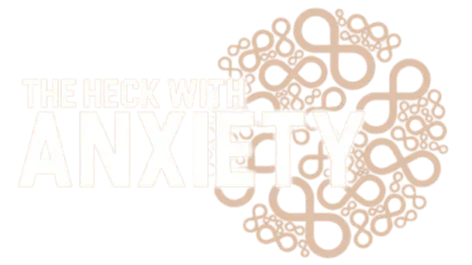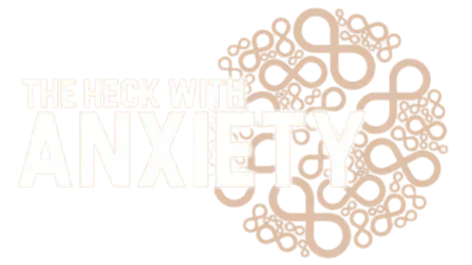Turning Setbacks into Strength: A Guide to Mental Flexibility

Life is a journey full of unforeseen obstacles. Whether it's a failed project, a missed opportunity, or a personal setback. Whatever the case, it's not the setback that defines us but how we respond. Have you ever encountered a setback that felt utterly impossible to overcome? We've all been there. But here's the thing: resilience and mental flexibility become crucial during these tough times. In this guide, we'll explore how to turn setbacks into strengths by cultivating mental flexibility and equip you with valuable strategies for embracing life's uncertainties.
Have you ever heard about the transformative power of visualization or the law of attraction? Both concepts have the potential to ignite a positive mindset within you. Visualization is not just a tool; it's a phenomenon that has empowered countless Olympic athletes, entrepreneurs, and entertainers to program their minds for success before they even step onto the field or stage.
By understanding and practicing visualization, you gain the power to intentionally manifest your dreams, objects, and people into your life experience. Whether or not you believe in the concept of being the creator of your own reality is irrelevant. What matters is that you have the freedom to experiment with your thoughts and build something new in your reality.
Understanding Mental Flexibility
What Is Mental Flexibility?
Benefits of Mental Flexibility:
Enhances problem-solving skills.
Encourages creative thinking.
Reduces anxiety and stress levels.
Improves interpersonal relationships.
Strategies for Developing Mental Flexibility
The Benefits of Doing Nothing
Accepting the Reality of Setbacks
The first step in turning a setback into strength is acceptance. You allow yourself to learn and grow when you acknowledge the circumstance for what it is rather than resisting it. Consider this:
"Acceptance of what has happened is the first step to overcoming the consequences of any misfortune." – William James.
Reframe Your Perspective
Once you accept a setback, it's essential to reframe your perspective. Instead of viewing setbacks as failures, consider them opportunities for learning and development. This shift in perspective is not just a change in words but a change in mindset that opens up a world of growth and potential. Instead of thinking, "I failed," try, "What can I learn from this?" It's all about perspective.
Setting Flexible Goals
Setting objectives can be beneficial, but rigid goals can become a source of frustration. Adopt a flexible approach when setting your objectives by:
Establishing short-term and long-term goals that can adapt to changing circumstances.
Creating contingency plans for potential setbacks.
Regularly evaluating and modifying your goals based on new insights or situations.
Flexibly-minded goals encourage exploration and adaptability, reinforcing your ability to manage setbacks.
Seeking Support and Collaboration
Don't hesitate to seek support from others. Discussing your experiences with friends, family, or colleagues can help you gain new perspectives and empower you to view setbacks differently. Collaborating with others also opens avenues for shared learning and growth.
Building Emotional Resilience
Visualization is a mental practice that helps a person develop vivid and detailed mental images of their dream life or desired results. You can use imagination to simulate the experiences in your mind, a technique often used by sports athletes for psychology and personal development.
For example, if you are preparing for a swimming competition, you can close your eyes and visualize yourself confidently taking first place in the competition. This will help your subconscious mind think of these imaginary situations as significant. Using all of your senses during the visualization process will help you practice effectively, which will create the way for your ideal future and specific goals.
Visualization has many uses, such as manifesting a specific goal or preparing yourself for tough challenges. According to a study, creative visualization techniques can improve performance. For example, tennis players who visualized doing better serve performed exceptionally. Many successful people focus on using visualization techniques regularly, which makes their subconscious mind more open-minded to achieving the outcome they envision.
Using your imagination can significantly move you toward your dream life. Here are some of the most useful and favorite visualization techniques that will help you to achieve your goals:
Practising Self-Compassion
We may be our worst critics, but practicing self-compassion can have a profound effect. Instead of criticizing yourself for making mistakes, try treating yourself with the compassion you'd offer a friend. This is not about letting yourself off the hook but about offering yourself the support and understanding you need to keep moving forward. Acknowledge your emotions, remind yourself that everyone experiences setbacks, and move on.
Benefits of Self-Compassion
Emotional Resilience: Being kind to yourself helps you bounce back faster from difficulties.
Motivation: You're more likely to persevere if you're not bogged down by self-criticism.
Building Resilience Through Setbacks
Let's be real—resilience doesn't mean never falling. It means getting back up and dusting yourself off after a setback in life. To build resilience:
Learn from Failures: Reflect on mistakes and identify areas for improvement.
Develop a Support Network: Surround yourself with people who encourage growth and positivity.
Keep a Journal: Writing about your experiences can help you process setbacks and spot patterns in handling challenges.
Turning Setbacks into Strengths
Transforming setbacks into strengths is more than just a positive mantra; it's a practical strategy rooted in mental flexibility. By accepting reality, reframing perspectives, and practicing self-compassion, you can enhance your ability to adapt and thrive in the face of challenges.
The next time you encounter a setback, pause and reflect. How might you view this challenge as an opportunity for growth? Remember, every setback presents an opportunity for a comeback—it all depends on how you respond.
For further reading on mental resilience, consider checking out:
The Power of Vulnerability by Brené Brown discusses the strength derived from acknowledging our imperfections.
Mindset: The New Psychology of Success by Carol S. Dweck focuses on the benefits of having a growth mindset.
Visualization can truly change your daily life by helping you manifest a positive mindset and achieve your dream life. By consistently applying these powerful visualization techniques, you can set yourself up for success. Engage all of your senses and maintain a positive emotional focus to enhance your desired outcomes.
Adopt a regular manifestation practice to keep your goals clear and your motivation strong. Embrace a positive mindset, believe in your ability to achieve your goals, and witness how your life aligns with your dreams.

Subscribe for clear, real-world strategies to help you manage stress, build resilience, and feel more in control of your day.
© 2025 The Heck With Anxiety
Privacy Policy
Terms and Conditions
Refund Policy
Legal Disclaimer
